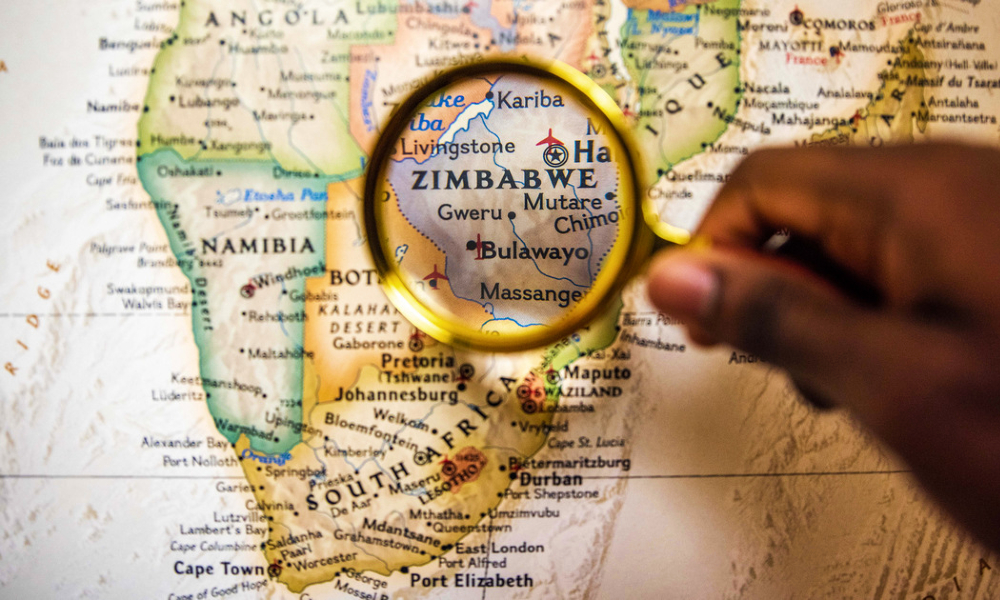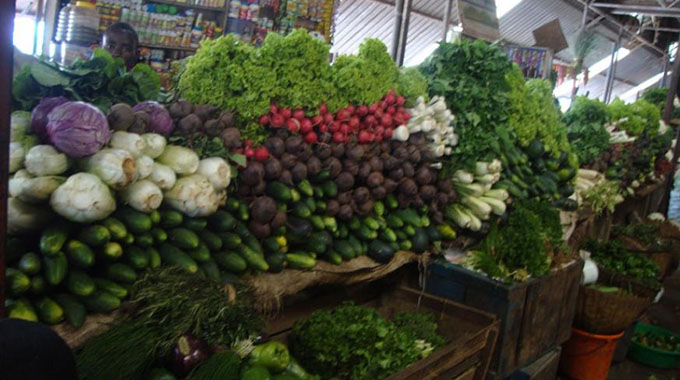Power cuts haunt Zimbabwe industry again
Zimbabwe’s industry and business are increasingly worried over rising power constraints that have resulted in increased electricity load shedding, which is threatening production and viability.
In recent weeks, load shedding has increased from about two hours to as much as 10 hours, resulting in businesses resorting to generators and solar power to run their operations.
This is despite the Government’s assurance that it has made several plans to ensure that the winter power supply situation is better than expected and is not expecting to exceed stage 1 load shedding despite the power crisis in the region.
The Government has also ring-fenced 100 MW for the winter wheat programme to secure national food security, indicating that other key economic sectors such as mining, industry, commercial, water pumping, hospitals and critical institutions are being prioritised alongside winter wheat farming.
However, Zimbabwe National Chamber of Commerce (ZNCC) president, Mike Kamungeremu, told Business Weekly that while the winter wheat factor is also part of business that has been prioritised, it is leaving others at a disadvantage for now.
“We are finding that those that are operating in particular areas like Southerton and Masasa have also been prioritised, as their load shedding has not been that bad.
“But for those operating in areas outside those jurisdictions, it has been tough for them, and they have resorted to using generators when the cost of running is huge for them, so it’s been a big disadvantage ever since the winter wheat season started,” he said.
Kamungeremu added that some businesses have been reporting not having electricity for the whole day, saying the power gets restored at night and then switched off around 4 am, meaning loss of production for the whole day, hence it’s a serious problem.
He said the cost of alternatives is too high and it has been estimated that in general, it goes up by 40 percent the moment you start using generators.
“Businesses that need huge power investments for their big machinery and plants realise that at the end of the day, it ceases to make business sense to use the generator because of the fuel that is required,” said Kamungeremu.
In a report titled, “Electricity Growth Through Reliable and Universal Energy Access”, the World Bank said the cost of self-generated electricity is far higher than the cost of grid electricity, “making firms uncompetitive”.
Power shortages have significant effect on the productive sector as they translates into lower economic growth and lower household incomes.
Supply shortages are costing Zimbabwe an estimated 6,1 percent of GDP per year, according to a World Bank report released in December 2023.
According to the Zimbabwe National Statistics Agency (ZimStat) index of electricity generation for the first quarter of 2024, the total volume of electricity distributed was
2 026,4GWh, reflecting a percentage decrease of 7,6 when compared to 2 192,2GWh distributed in the 4th quarter of 2023.
Of the distributed electricity, users in the manufacturing, transport and construction sectors consumed 616,5 GWh, which is 30,4 percent; mining and quarrying used 286,0GWh (14,1 percent); domestic consumers used 500,1GWh (23,0 percent); others used 474,5GWh (24,7 percent) and agriculture and forestry sectors used 159,6GWh, which was 7,9 percent.
Kamungeremu noted that one business member who is into milling had actually acquired a generator that used to chew up to 80 litres of diesel per hour, but then discovered that it did not make business sense because the price of maize meal cannot go up, so you cannot add up to the cost and pass that on to the consumer because it’s a controlled product.
“As a result, they just stopped and waited for power to be restored and waited within the schedule to do production; as a result, there was a lot of lost production,” he said.
He added that the capital to cover this increase in costs is huge, and most industries say the investment requires a huge capital outlay upfront, which most of them cannot afford, and those that have already done it are now faced with the challenge of meeting the operating costs going forward.
According to the World Bank medium-term projections, Zimbabwe’s electricity demand will grow from 1 950MW in 2022 to 5 177MW by 2030, driven primarily by increasing demand from the mining and agriculture sectors.
Energy and Power Development Minister, Edgar Moyo, said maximum generation at Hwange units 7 and 8 is consistently producing over 600MW, while Hwange units 1-6 are performing fairly well, producing an average of 30 MW from enhanced maintenance and prioritisation of critical spares.
He said Kariba dispatch is being optimised to produce an average of 250 MW, with peak supply up to 400MW.
“We have several existing import arrangements with our counterparts and ZETDC will also be actively involved in the Southern African Power Pool (SAPP) Day Ahead Market to access any excess power from the region. These short-term import initiatives will help address the power requirements this winter,” he said.
He added that Independent Power Producers (IPPs) are producing an average of 50 MW, while solar net metering capacity is at 24 MW, and an additional 16 MW are expected this winter.
Meanwhile, Confederation of Zimbabwe Industries (CZI) president, Kurai Matsheza, told Business Weekly that electricity costs have constantly been increasing while at the same time supply remains depressed.
“Some companies will switch to more expensive alternative sources of power, so again, it is an increase in cost.
“When that happens, combined with the real cost of electricity that has aggressively gone up, it just makes the cost of producing more expensive, and those costs will be transferred to the goods and services that are being sold,” he said.
He added; “It is not good for us as producers but also not good for consumers; this will just make the cost go up.”
While the companies are investing in alternative energy, Matsheza said most of them are short-term, as huge power projects require significant capital outlays.
Matsheza, however, noted that ZESA’s recent realisation of the need to support industry is a positive step forward, but the persistent occurrence of load shedding in certain areas means that industries remain cautious, often keeping diesel generators on standby.
According to Minister Moyo, the issue of power supply in the country is heavily affected by hydrological issues in Lake Kariba, where it has lost over 800 megawatts of its stored capacity of 1050 MW.
“We are only able to produce 214 megawatts on average because of the water rationing, which has resulted from low inflows in the lake.
“From that perspective, after losing over 800 megawatts, it makes it very difficult to sufficiently supply power in the country,” he said this during a parliament question and answer session recently.
“However, we have come up with measures to ensure that our power supply is at least able to make the country function, one of which was the commissioning of Units 7 and 8, which produce above 600 megawatts on a daily basis, and those two units are very efficient.
“We also have Units 1 to 6, where we have four units in operation, and they are producing an average of 300 megawatts.
“Some of those units are not very reliable, and we have come up with a mechanism to constantly repair them,” he said.
He noted that other measures put in place include renewable energy efforts, where the government, through the Zimbabwe Energy Regulatory Authority (ZERA), has given licenses to a number of IPPs who are developing their own projects.
“Some of them are mines; others are factories and agricultural undertakings where they are producing their own power. On the mining front, we have asked Ferro Chrome miners; those ones are subsidised; they have a lower rate in terms of their tariffs.
“So, we have asked them and given them a period of time that lapses at the end of next year to develop their own generation of plants for their own consumption so that we have more power, which is free for social use,” Minister Moyo said.
A source within the power utility said there has not been in imports in recent times as the shortfall in power supply of approximately 300MW is managed through load shedding for households.
“We have the capacity to meet demand had it not been for hydrology issues at Kariba.
“ For example, today (Wednesday) we are producing 1 500MW against demand of 1 795MW resulting in a shortfall of 295MW. This shortfall could have been met by Kariba which has been restricted to 214MW against its installed capacity of 1 050MW,” said the source.
Economists contend that the availability of modern, reliable, and efficient energy services is an important driver of economic development.
Most countries in Sub-Saharan Africa, however, face major challenges in trying to achieve their development and social obligations because of inadequate access to electricity, and the power situation has weighed on company performances.
Proplastics, a company involved in the manufacturing of plastic pipes, said in its recent financials that power supply remains a risk for the business and hence it will invest in a solar-generating project.
Victor Bhoroma, an economist, said power is the gateway to productivity and industrialisation in an economy; hence, without addressing power generation, the Zimbabwean economy will not achieve consistent growth.
He said the loss in generation output means prolonged power cuts of 6 to 12 hours per day, and this is unsustainable for the local economy, which is heavily skewed towards the agro-industry and mining, which require an uninterrupted power supply.-ebusinessweekly











